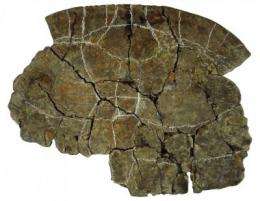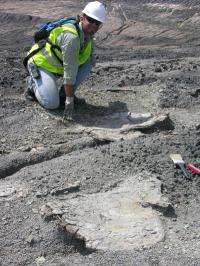New thick-shelled turtle species lived with world's biggest snake

The discovery of a new fossil turtle species in Colombia's Cerrej贸n coal mine by researchers from the Smithsonian Tropical Research Institute in Panama and the Florida Museum of Natural History helps to explain the origin of one of the most biodiverse groups of turtles in South America.
Cerrejonemys wayuunaiki takes its genus name from Cerrej贸n, and emys鈥擥reek for turtle. Its species name is the language spoken by the Wayuu people who live on the Guajira Peninsula in northeastern Colombia near the mine.
About as thick as a standard dictionary, this turtle's shell may have warded off attacks by the Titanoboa, thought to have been the world's biggest snake, and by other, crocodile-like creatures living in its neighborhood 60 million years ago.
"The fossils from Cerrej贸n provide a snapshot of the first modern rainforest in South America鈥攁fter the big Cretaceous extinctions and before the Andes rose, modern river basins formed and the Panama land bridge connected North and South America," explains Carlos Jarmillo, staff scientist at the Smithsonian who studies the plants from Cerrej贸n.

"We are still trying to understand why six of this turtle's modern relatives live in the Amazon, Orinoco and Magdalena river basins of South America and one lives in Madagascar," explains Edwin Cadena, first author of the study and a doctoral candidate at North Carolina State University. "It closes an important gap in the fossil record and supports the idea that the group originated near the tip of South America before the continent separated from India and Madagascar more than 90 million years ago."
Cadena will characterize two more new turtle species and analyze the histology of fossil turtle bones from the Cerrej贸n site. "I hope this will give us an even better understanding of turtle diversity in the region and some important clues about the environment where they lived."
More information: Cadena, Edwin A., and Jonathan I. Bloch and Carlos A. Jaramillo. "New Podocnemidid Turtle (Testudines: Pleurodira) from the Middle-Upper Paleocene of South America." Journal of Vertebrate Paleontology 30.2 (2010): 367-382
Provided by Smithsonian Tropical Research Institute



















